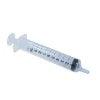Hey everybody,
I've been having what seems like pH problems, which I describe in another thread.
So today I did a series of experiments. My tap water is pH 8,2, so I used that as a reference. My pH-down is 38% nitric acid. What I did was that I filled a series of 1,5l bottles with tap water, and then added different amounts of nitric acid and then tested the resulting pH. To my surprise, the results were VERY different even when adding what seemed like the same amount of nitric acid.
6 drops yielded a pH of 7,3 - 7,4 - 7,2 (I did this experiment three times)
7 drops yielded a pH of 4,8 - 7,5 - 7,1 - 6,9 - 5,2 - 6,1 - 5,5 - 5,2 - 7,5 (I did this experiment nine times)
8 drops yielded a pH of 4,7 - 7,0 - 4,6 - 4,0 - 4,2 - 4,1 - 4,0
9 drops yielded a pH of 7,2 - 6,4 - 4,3
As you notice, I did many experiment with 7 and 8 drops. Now, I go to med school so I am quite familiar with chemistry, and I can't for the life of me figure out why my results have such an extreme spread and inconsistency.
To distribute the drops of nitric acid I am using a 10ml syringe very much like this:

I have shaken the pH-down bottle before the experiments.
As far as I know the drops are supposed to be almost exactly the same volume if they are from the same syringe. This is driving me crazy, and my plants are suffering greatly because of the unstable (and probably a little high) pH levels.
Please give me some insight before i go crazy!
Peace out!
I've been having what seems like pH problems, which I describe in another thread.
So today I did a series of experiments. My tap water is pH 8,2, so I used that as a reference. My pH-down is 38% nitric acid. What I did was that I filled a series of 1,5l bottles with tap water, and then added different amounts of nitric acid and then tested the resulting pH. To my surprise, the results were VERY different even when adding what seemed like the same amount of nitric acid.
6 drops yielded a pH of 7,3 - 7,4 - 7,2 (I did this experiment three times)
7 drops yielded a pH of 4,8 - 7,5 - 7,1 - 6,9 - 5,2 - 6,1 - 5,5 - 5,2 - 7,5 (I did this experiment nine times)
8 drops yielded a pH of 4,7 - 7,0 - 4,6 - 4,0 - 4,2 - 4,1 - 4,0
9 drops yielded a pH of 7,2 - 6,4 - 4,3
As you notice, I did many experiment with 7 and 8 drops. Now, I go to med school so I am quite familiar with chemistry, and I can't for the life of me figure out why my results have such an extreme spread and inconsistency.
To distribute the drops of nitric acid I am using a 10ml syringe very much like this:

I have shaken the pH-down bottle before the experiments.
As far as I know the drops are supposed to be almost exactly the same volume if they are from the same syringe. This is driving me crazy, and my plants are suffering greatly because of the unstable (and probably a little high) pH levels.
Please give me some insight before i go crazy!
Peace out!


